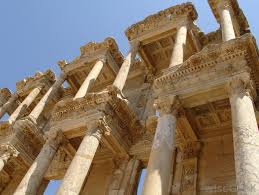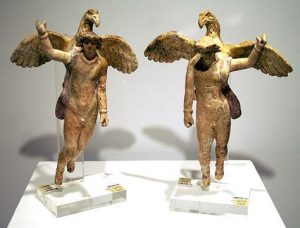The period of ancient Greece history between the 323 BC and 31 BC is referred to as the ancient Greece Hellenistic. The word Hellenistic is inspired by the word Hellazein, which basically meant to identify with the Greeks.
Ancient Greece Hellenistic
This period is called as the ancient Greece Hellenistic because of the Greek empire was spread across the entire Mediterranean and parts of Asia and had reached till India. It was the Macedonian emperor Alexander the Great who had successfully spread the Greek empire to all these places.

Hellenistic Empire
Alexander became the leader of the Greek kingdom of Macedonia in 336 BC. In the next 13 years, he successfully spread the Greek empire far and wide. After his death in 323 BC, his empire was governed by his generals.
The empire was divided into fragments and started to crumble slowly. But before the empire was invaded by various forces like the Persians and the Romans, it made a huge impact on all the places and the people which were under the ruling of the Greeks.

Hellenistic Culture
The Hellenistic states were ruled by kings. This era saw the transformation of the Greece society from a localized and city-states approach to a more extrovert and open culture mainly due to the cosmopolitan nature of the kings who ruled these regions.
Commercial relations between different places improved in this period. As people got to move around places more often, the Greek culture and way of life were spread across many borders and hence influenced many places.
This period was also an important era of the development of sciences. Great mathematicians like Euclid and Archimedes were a part of this era and their findings are even today considered very important. Scientist Eratosthenes calculated the circumference of the Earth within 1500 miles and the fact that the earth was not flat but was a sphere was prevalent in this period.

Hellenistic Architecture
Culture in the Hellenistic period also changed with time. Art and architecture also not only evolved in this period but also flourished a great deal. Many sculptures made in the Hellenistic world are influential even today.
Architectural styles changed and refined and new ideas like the Corinthian order were implemented in this period. Most people of the Hellenistic period knew the same language. It was called koine, which was a kind of a colloquial Greek language.
Political atmosphere and functioning of the governments of a lot of places changed in this period. Governments were then not run by the common people but included professionals.

This period finally came to an end in 31 BC when in the battle of Actium the Romans were victorious. That saw the end of ancient Greece and but the influence of the Greece culture had its influence for many years down the line.